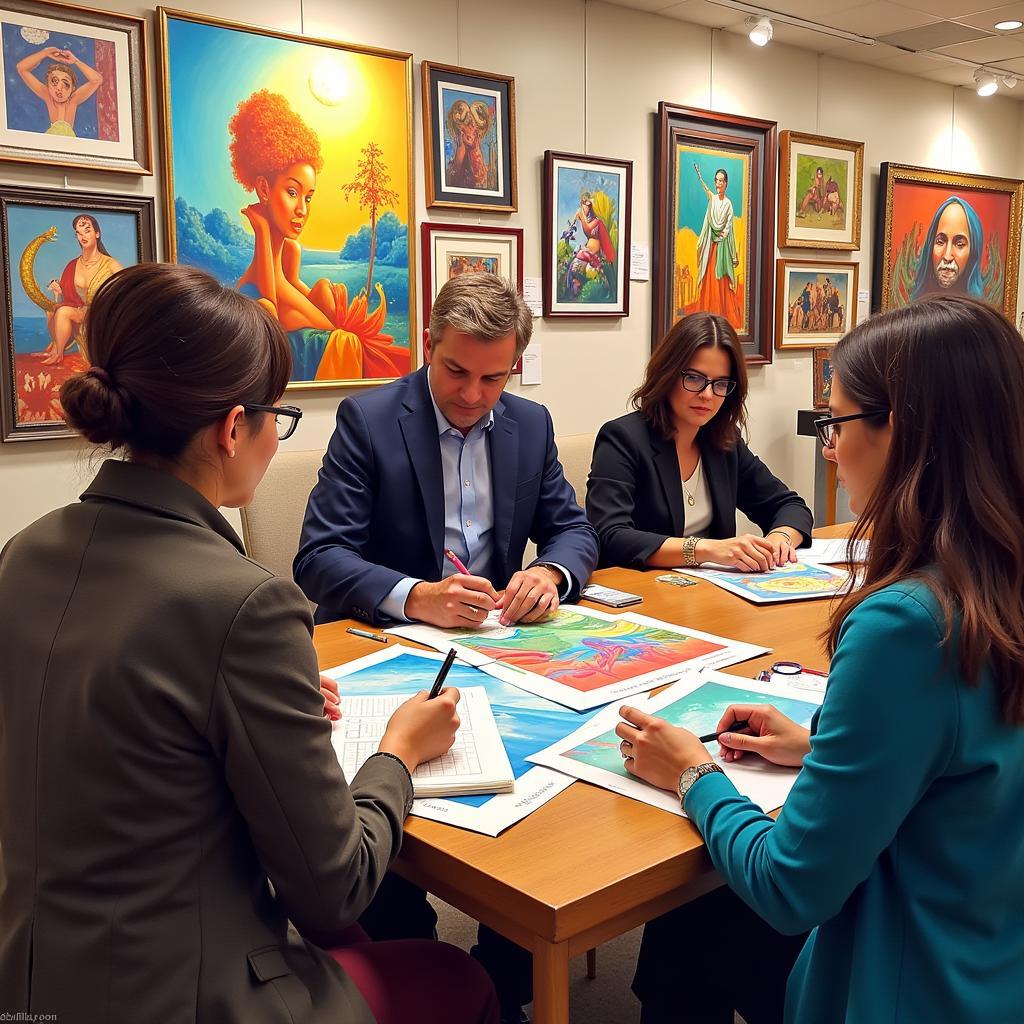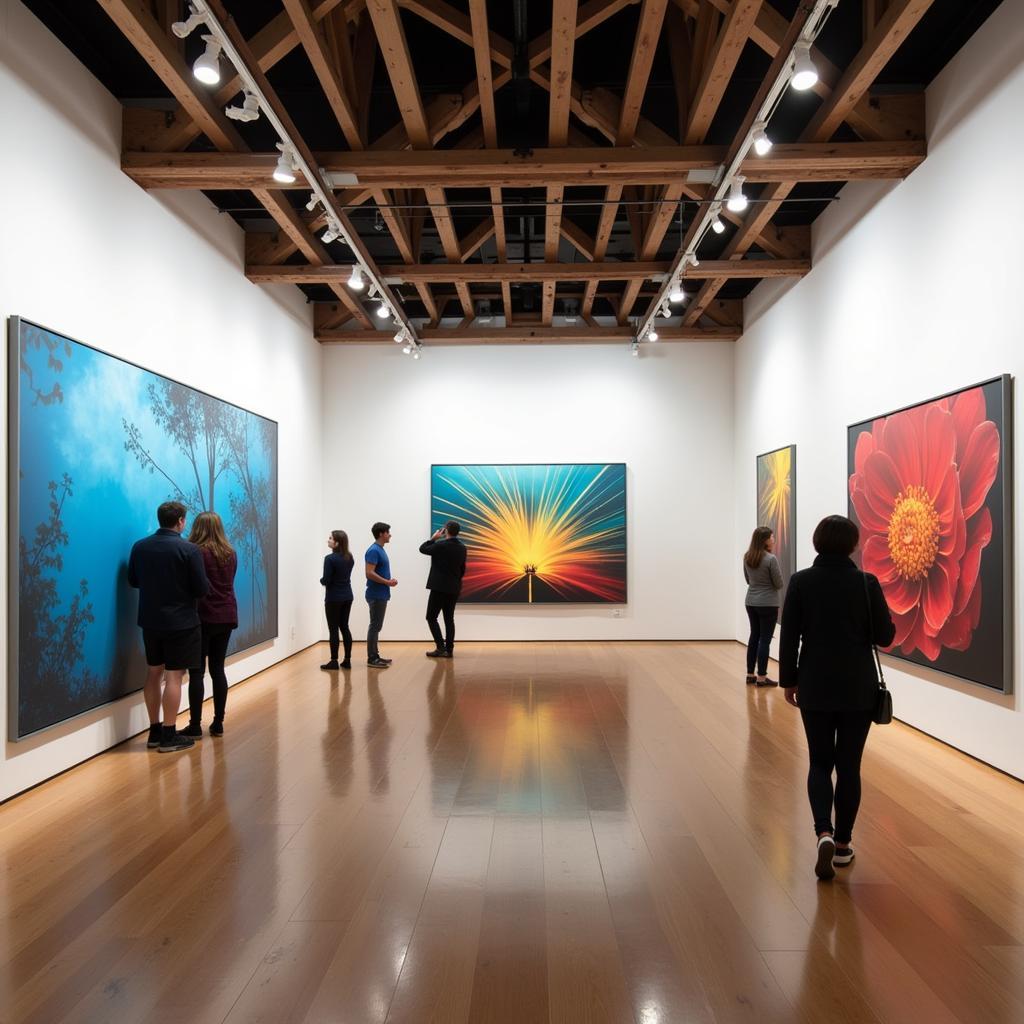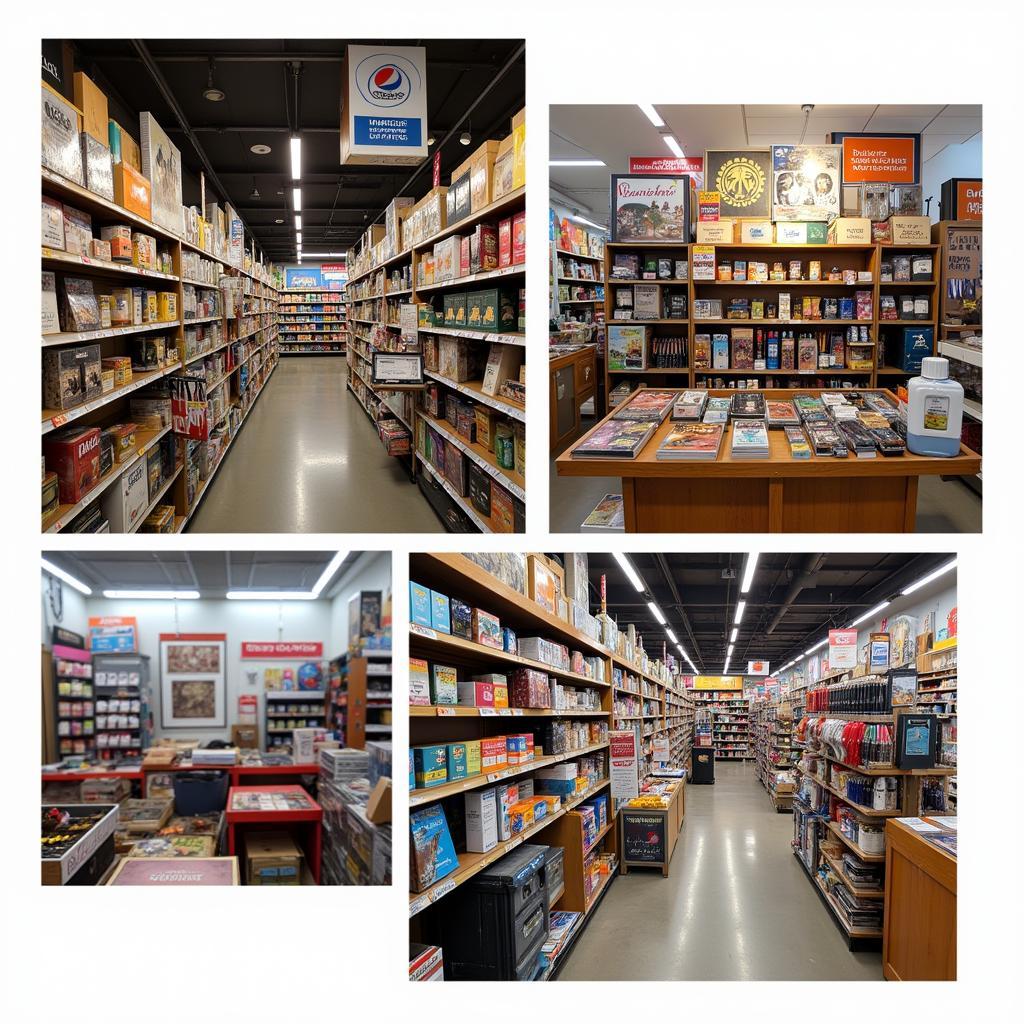What is a Juried Art Show?
A juried art show is a curated exhibition where artwork is selected by a jury, or panel of judges, based on specific criteria. Understanding the intricacies of these shows can be invaluable for both aspiring and established artists. They offer a platform for recognition, networking, and sales, while also providing a valuable learning experience. Let’s delve deeper into the world of juried art shows.
 The Judging Process of a Juried Art Show
The Judging Process of a Juried Art Show
Understanding the Jury Process
The jury, typically comprised of art professionals, critics, curators, or established artists, reviews submitted artwork based on a predetermined set of criteria. This may include originality, technical skill, composition, and adherence to the show’s theme, if any. The Hueston Woods Arts and Crafts Fair, for instance, likely has a distinct set of criteria compared to a more traditional fine arts exhibition.
Why is the Jury Important?
The jury’s role is crucial in maintaining the quality and integrity of the art show. They ensure that the selected works represent a high standard of artistic excellence and relevance to the show’s theme. Their expert opinions provide valuable feedback for artists, helping them grow and develop their artistic practice.
The selection process is typically blind, meaning the jury doesn’t know the artist’s identity when evaluating their work. This ensures impartiality and focuses solely on the artistic merit of each piece.
Benefits of Participating in a Juried Art Show
Participating in a juried art show, like the Lakefront Festival of Arts Milwaukee, offers numerous benefits for artists.
- Recognition and Validation: Being accepted into a juried show provides external validation of your artistic skills and can boost your confidence.
- Networking Opportunities: Art shows provide opportunities to connect with other artists, gallery owners, collectors, and art enthusiasts. These connections can lead to future collaborations, exhibitions, and sales.
- Sales Potential: Juried art shows often attract a large audience of potential buyers, providing a platform to sell your artwork.
- Professional Development: The feedback received from the jury, whether positive or negative, can be invaluable for artistic growth and development.
Participating in a juried student art show is especially beneficial for emerging artists, offering valuable experience and exposure early in their careers.
Preparing for a Juried Art Show
Successfully navigating the juried art show process requires careful planning and preparation.
- Research the Show: Thoroughly research the show’s theme, guidelines, and jury criteria. Understanding the specific requirements is essential for a successful submission. The Art in the Park Rutland VT, for example, will have different requirements than the Suwanee Art Festival.
- Select Your Best Work: Choose pieces that align with the show’s theme and showcase your strongest skills. Quality over quantity is key.
- Prepare High-Quality Images: Professional-quality images of your artwork are crucial for the jury’s evaluation. Ensure the images accurately represent the artwork’s colors, textures, and details.
- Craft a Compelling Artist Statement: A well-written artist statement provides context for your work and helps the jury understand your artistic vision.
Conclusion
Juried art shows are a valuable platform for artists to showcase their work, gain recognition, and connect with the art community. Understanding the process and preparing thoroughly can significantly increase your chances of success. Whether you’re a seasoned professional or an emerging artist, the experience and exposure gained from participating in a juried art show are invaluable.
FAQ
- What is the difference between a juried and non-juried art show? A juried show involves a selection process by a panel of judges, while a non-juried show is open to all artists who meet the entry requirements.
- How do I find juried art shows to enter? Online art resources, artist communities, and local art organizations are great places to find calls for entries.
- What should I include in my artist statement? Your artist statement should briefly describe your artistic practice, the inspiration behind your work, and the concepts you explore.
- How important are professional photographs of my artwork? High-quality images are crucial, as they are the jury’s first impression of your work.
- What happens if my artwork isn’t accepted? Don’t be discouraged! Use the feedback, if provided, to improve your work and continue submitting to other shows.
- How can I improve my chances of getting accepted? Thoroughly research the show, select your strongest pieces, prepare high-quality images, and craft a compelling artist statement.
- Are there fees associated with entering a juried art show? Most juried shows charge an entry fee to cover administrative costs and prizes.
For further assistance, consider other articles on our website, such as information on specific juried art shows like the Hueston Woods Arts and Crafts Fair.
If you need help, please contact us at Phone Number: 02462573573, Email: danteum@gmail.com or visit us at Savico Megamall, 7-9 Đ. Nguyễn Văn Linh, Gia Thụy, Long Biên, Hà Nội 10000, Việt Nam. We have a 24/7 customer service team.


